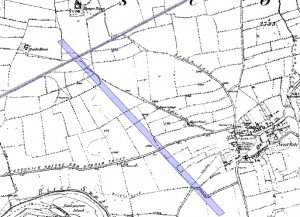Glossaries Glossaries Latin (Roman) Terms Technical Terms Archaeological Glossary Mote of Mark, Dumfries Mote of Mark Mote of Mark, Rockcliffe. Dumfries & Galloway 4 miles south of Dalbeattie NX 845540 Vitrified Fort The Read more Knockfarrel, Ross and Cromarty Knockfarrel Knockfarrel (Gaelic, cnoc, hill; faire, watch, or guard) Ross & Cromarty 2 1/2 miles west …
Category: Uncategorized
Sep 28
Maiden Castle, Reeth, North Yorkshire
Glossaries Glossaries Latin (Roman) Terms Technical Terms Archaeological Glossary Mote of Mark, Dumfries Mote of Mark Mote of Mark, Rockcliffe. Dumfries & Galloway 4 miles south of Dalbeattie NX 845540 Vitrified Fort The Read more Knockfarrel, Ross and Cromarty Knockfarrel Knockfarrel (Gaelic, cnoc, hill; faire, watch, or guard) Ross & Cromarty 2 1/2 miles west …
Sep 28
Scoles Coppice, South Yorkshire
Glossaries Glossaries Latin (Roman) Terms Technical Terms Archaeological Glossary Mote of Mark, Dumfries Mote of Mark Mote of Mark, Rockcliffe. Dumfries & Galloway 4 miles south of Dalbeattie NX 845540 Vitrified Fort The Read more Knockfarrel, Ross and Cromarty Knockfarrel Knockfarrel (Gaelic, cnoc, hill; faire, watch, or guard) Ross & Cromarty 2 1/2 miles west …
Sep 28
Live Moor, Whorlton, North Yorkshire
Glossaries Glossaries Latin (Roman) Terms Technical Terms Archaeological Glossary Mote of Mark, Dumfries Mote of Mark Mote of Mark, Rockcliffe. Dumfries & Galloway 4 miles south of Dalbeattie NX 845540 Vitrified Fort The Read more Knockfarrel, Ross and Cromarty Knockfarrel Knockfarrel (Gaelic, cnoc, hill; faire, watch, or guard) Ross & Cromarty 2 1/2 miles west …
Sep 28
Staple Howe, West Hesterton, North Yorkshire
Glossaries Glossaries Latin (Roman) Terms Technical Terms Archaeological Glossary Mote of Mark, Dumfries Mote of Mark Mote of Mark, Rockcliffe. Dumfries & Galloway 4 miles south of Dalbeattie NX 845540 Vitrified Fort The Read more Knockfarrel, Ross and Cromarty Knockfarrel Knockfarrel (Gaelic, cnoc, hill; faire, watch, or guard) Ross & Cromarty 2 1/2 miles west …
Sep 28
Sutton Common, Doncaster, South Yorkshire
Glossaries Glossaries Latin (Roman) Terms Technical Terms Archaeological Glossary Mote of Mark, Dumfries Mote of Mark Mote of Mark, Rockcliffe. Dumfries & Galloway 4 miles south of Dalbeattie NX 845540 Vitrified Fort The Read more Knockfarrel, Ross and Cromarty Knockfarrel Knockfarrel (Gaelic, cnoc, hill; faire, watch, or guard) Ross & Cromarty 2 1/2 miles west …
Sep 27
Thornborough Henges, North Yorkshire
Glossaries Glossaries Latin (Roman) Terms Technical Terms Archaeological Glossary Mote of Mark, Dumfries Mote of Mark Mote of Mark, Rockcliffe. Dumfries & Galloway 4 miles south of Dalbeattie NX 845540 Vitrified Fort The Read more Knockfarrel, Ross and Cromarty Knockfarrel Knockfarrel (Gaelic, cnoc, hill; faire, watch, or guard) Ross & Cromarty 2 1/2 miles west …
Sep 27
Scorton Cursus, North Yorkshire
Glossaries Glossaries Latin (Roman) Terms Technical Terms Archaeological Glossary Mote of Mark, Dumfries Mote of Mark Mote of Mark, Rockcliffe. Dumfries & Galloway 4 miles south of Dalbeattie NX 845540 Vitrified Fort The Read more Knockfarrel, Ross and Cromarty Knockfarrel Knockfarrel (Gaelic, cnoc, hill; faire, watch, or guard) Ross & Cromarty 2 1/2 miles west …
Sep 27
Kirkhaugh, Cumbria
Glossaries Glossaries Latin (Roman) Terms Technical Terms Archaeological Glossary Mote of Mark, Dumfries Mote of Mark Mote of Mark, Rockcliffe. Dumfries & Galloway 4 miles south of Dalbeattie NX 845540 Vitrified Fort The Read more Knockfarrel, Ross and Cromarty Knockfarrel Knockfarrel (Gaelic, cnoc, hill; faire, watch, or guard) Ross & Cromarty 2 1/2 miles west …











